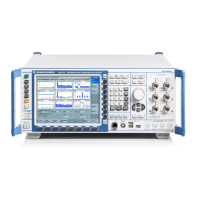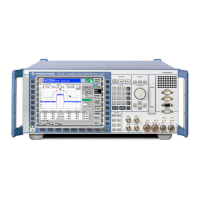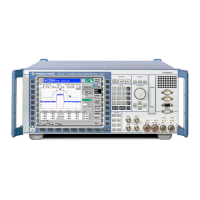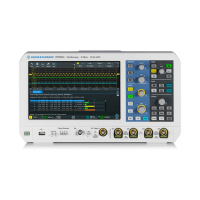System Overview
R&S
®
CMW500
72User Manual 1173.9463.02 ─ 06
●
They provide a comprehensive picture of the performance of a tested RF transmitter
with a minimum of effort for configuring the R&S CMW500.
●
They provide "linked" results: The different measured quantities are all based on the
same set of raw measurement data.
In remote control, it is possible to control each multi evaluation measurement as a whole
but retrieve the different types of results separately.
Controlling multi evaluation measurements
A multi evaluation measurement is controlled like any other measurement using the
measurement control softkey.
Measurement results and settings
Multi evaluation measurement results are displayed in a common measurement dialog
which may comprise several diagrams (views) and other output elements. In general, it
is possible to modify the display settings, e.g. in order to zoom in on a single diagram.
Measurement settings for the different views are also part of a common configuration
dialog. Many parameters (e.g. the connection control settings and statistical parameters)
affect the entire multi evaluation measurement.
Measurement speed considerations
A multi evaluation measurement ensures that the entire set of results is acquired and
processed as quickly as possible. If only a part of the results is needed, it can be pref-
erable to restrict the scope of the measurement in order to gain additional speed.
Example: Disabling the ACLR results in the GSM multi evaluation measurement speeds
up the measurement of the modulation accuracy.
3.2.8 RX Measurements
The purpose of an RX measurement is to assess the performance of an RF receiver. The
R&S CMW500 transmits a definite bit pattern on the downlink (forward) RF signal. The
device under test demodulates the received signals; the percentage of bits or data blocks
received in error is counted.
There are different methods of assessing the receiver quality:
●
In a single-ended receiver quality test, the received bit sequence is evaluated at the
DUT. The measurement requires a real-time or ARB RF generator; no R&S CMW500
measurement application is needed.
●
In a loop test the DUT is commanded into an operating mode where it loops back the
received data. The R&S CMW500 demodulates the uplink (reverse) signal and com-
pares the received bits with the original pattern. The bit error rate is calculated,
assuming no transmission errors in the uplink. The loop test requires an RF generator
in combination with a measurement application. No signaling functionality is required.
Measurements
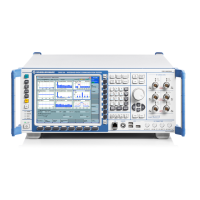
